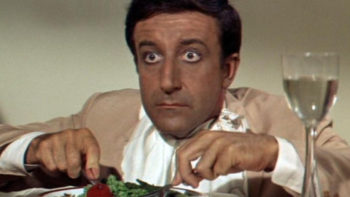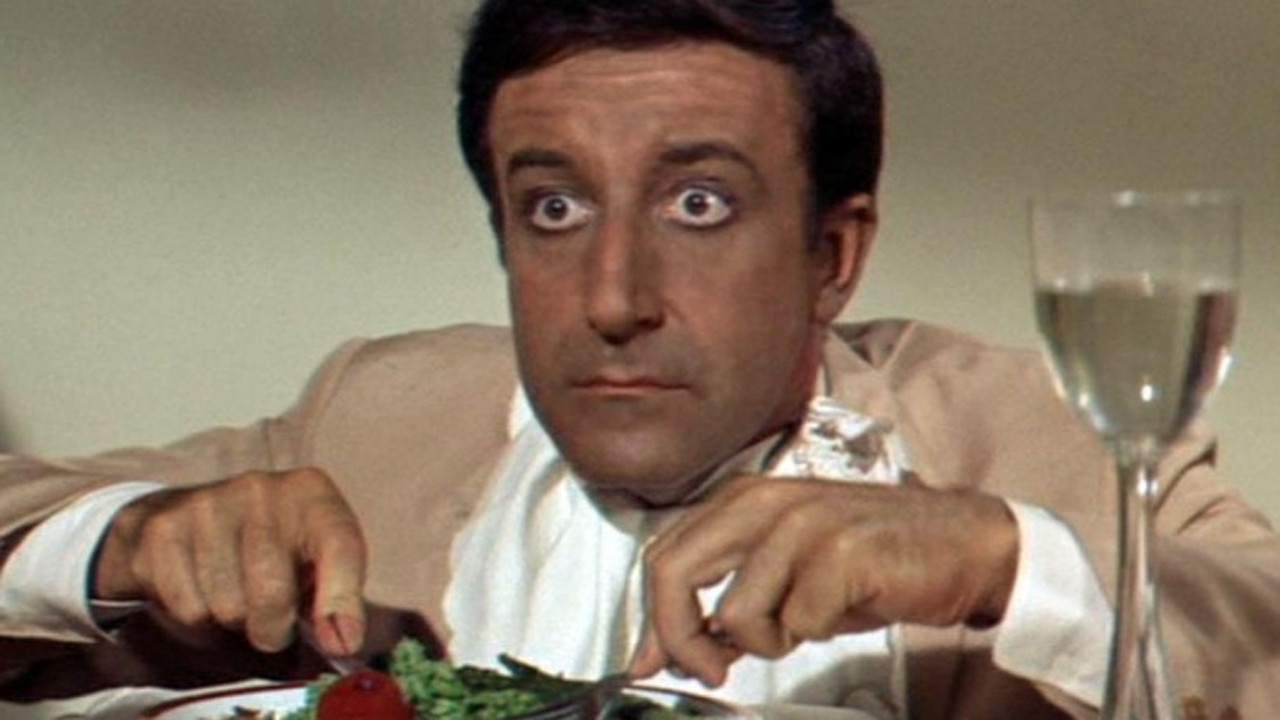[ad_1]

Peter Sellers as Hrundi V. Bakshi in the 1968 film The Party.
Anton Kern Gallery in New York is currently hosting an exhibition titled “The Party,” organized by independent curator Ali Subotnick. The show brings together a group of artists with a purported mutual interest in exploring “the comedic impulse in art.” The title of the exhibition comes from the eponymously titled 1968 film starring Peter Sellers as an Indian actor, Hrundi V. Bakshi. The problem here is not that the show sweeps under the rug the film’s use of brownface or its consequences. Rather, the problem is that it bluntly sidesteps, particularizes, and ultimately dismisses these issues. Per the exhibition’s press release:
The movie itself continues to carry a cultural resonance despite the uncomfortable fact that Peter Sellers is a white actor playing an Indian man. After the film’s release it was banned for several years in India. The complex nature of its reception is perhaps best highlighted by former prime minister Indira Gandhi who, an avid fan of the movie, was famous for quoting Peter Sellers[’s] character, saying, “In India we don’t think who we are, we know who we are.”
Already telling here is the use of the word “uncomfortable” to describe Sellers’s brownface performance. The word sanitizes the impact of a racist performance, giving race the status of an inconvenient contingency, rather than the bedrock of the film. The inclusion of Indira Gandhi’s endorsement is strange yet familiar, as if to pull a prominent friend of color onstage in order to justify one’s apparently racist sentiment.
That said, the press release isn’t wrong in stating that Indian people do have a varied, oftentimes complicated relationship with the film, and the film itself should not be dismissed on the premise of being problematic. However, in attempting to justify the exhibition’s reflective connection to the film—with its nearly all-white roster of artists—the press release is disingenuous. Subotnick didn’t fail to conduct an earnest, critical reexamination of the original film inasmuch as she didn’t even try, because that was never her intention. The press release continues:
The artist Jamie Isenstein explains the surprising continued relevance of the film: “Peter Sellers in blackface is the painted ‘elephant in the room’!!! In high school I loved the film for the zany/realist gags, the 1960s aesthetics and the slow build to mayhem. I never realized how complicated the film is, that it is actually making a statement about cultural appropriation . (After all it was released the same year the Beatles went to India). It all started to click when the cowboy pulled the Italian lady past the camera while she’s holding a bucket of Kentucky Fried Chicken (even Italians and their Spaghetti Westerns are indicted!). And then Bakshi explains the offensiveness of painting the elephant by suggesting he take on a western costume. True genius.”
Isenstein flattens Sellers’s racial caricature and its political consequences without any attempt to understand the knots between culture and power. After carelessly misidentifying his performance as blackface, not brownface, Isenstein minimizes its implications. She conducts a generous reading that seeks to redeem the film as a piece of meta-critique.
But as with the assertion that the film’s reception is “complex,” the claim that the film is making a statement about cultural appropriation rings hollow. In what way does the film puncture the received notions of Indian identity or the West’s appropriative tendencies? In what ways did the film benefit from having a white man play an Indian man other than the fact that the producers knew that Sellers was hugely influential, and to see him in brownface would be a sure laugh?
With the use of brownface by Sellers, the film immediately forecloses the possibility for critical political expression, callously erasing, replacing, and ultimately mocking the very real Indian population. And yet, it remains fitting that there would be those, like Isenstein, who would attempt to salvage the political valence of the film, if only to divine a kind of white beatitude, where “complex” stands for superficial racial awareness tempered with the abstraction of cultural equivalence.
While the Kitchen hosts the Racial Imaginary Institute in order to examine the “ongoing and unfinished history” of whiteness as a self-legitimating and stultifying orientation, Subotnick’s exhibition might be seen as a further case study in how whiteness executes its imaging of both itself and the other. Making a case for complexity, “The Party” posits, is best left to a white man who can play the double-sidedness of a sticky situation—maintaining cultural authority while also supposedly questioning it. Rather than risk even the thought of racism, it is considered better to hide it behind a lame cultural equivalence, like a perceived slight against a tertiary white Italian character [“even Italians . . . are indicted!”] and Sellers’s racist brownface performance. It’s a ridiculous and dangerous comparison that reeks of reactionism disguised as freedom.
As writers Eunsong Kim and Maya Mackrandilal aptly put it: for whiteness, “the truest expression of freedom is the freedom to hunt, torture, kill, and then to represent your enemies . . . Freedom to dominate. Freedom to ask for an explanation of an oppressive past—nonchalantly, in a column, respectfully! Freedom for white dreams.” “The Party” maintains that the complex power of art shall come for and by white people, even if it means racial pantomime. None of this should be surprising, of course. Whiteness has never needed any other reason to lash out beyond “because I can.” For a lily-white art world, racism is just another cheap thrill, the perfect way to give a laid-back summer group show an edge. In this case, a vein of historical racism was excavated, uncritically reproduced, and collectively enjoyed.
For an exhibition ostensibly interested in dealing with the elephant in the room, the joke is still on brown people. We were not invited to the party—there are no actual Indian people or people of color in the exhibition, with the exception of Marepe, whose work does little to challenge the show’s fraught premise. This omission lays bare the intentions of the exhibition: not to interrogate racism, but to enjoy it. The exhibition seems intent on bringing race into the gallery without threatening white feelings, implicating white viewership, or problematizing the participation of white artists. While forms of critique and the active dismantling of whiteness could not be more urgent, “The Party” at Anton Kern insists on coddling whiteness, giving it a safe space—an ivory tower filled with balloons, where prejudice can be consumed guilt-free.
– Ajay Kurian (b. 1984) is an artist and writer. He lives and works in Brooklyn. He is represented by 47 Canal in New York and Sies+Höke in Germany.
– Vijay Masharani (b. 1995) is an artist and writer. He lives and works in Queens.
[ad_2]
Source link

